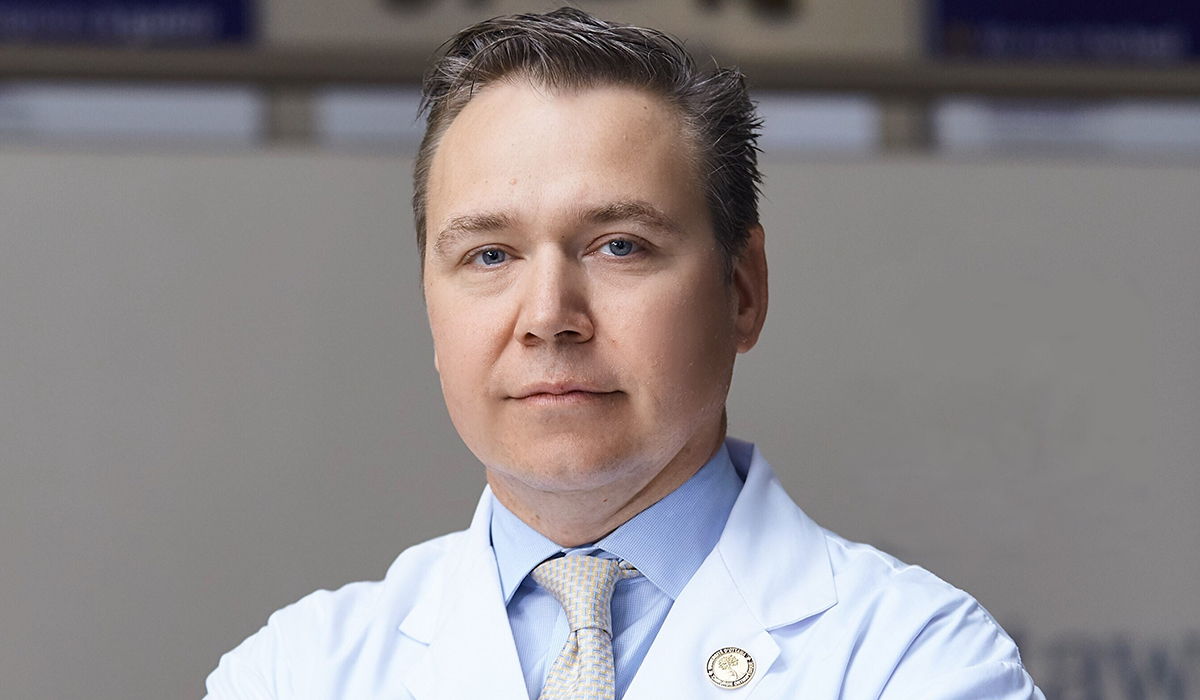Researchers at Carleton University and The Ottawa Hospital Research Institute are pursuing ways to improve the success of orthopedic surgeries and achieve robust long-term mobility for thousands of Canadians.
Through the new Ottawa Orthopaedic Biomechanics Core Facility, surgeons and researchers are using a robotic arm developed by KUKA, a German industrial robotics and factory automation company, to help them better understand the biomechanics of orthopedic implants.
“The purpose of the KUKA robot is to precisely reproduce real-life joint motions and forces so that we can better understand how injuries happen and to test innovative orthopedic procedures and implants to address these injuries,” says the lab’s lead researcher, Dr. Paul E. Beaulé, who is also Director of Research and Innovation for Orthopedic Surgery at The Ottawa Hospital.

Carleton Mechanical and Aerospace Engineering researcher Andrew Speirs has worked alongside Dr. Beaulé and surgeons at The Ottawa Hospital for more than a decade. In this new project, the robot arm will allow him and the team to apply rotations and see how forces affect the reconstruction of joints.
“There are a lot of mechanics to consider in surgical repairs of anatomy in terms of how we move and how the joints are loaded—ultimately how a reconstruction technique performs,” says Speirs.
“In a reconstruction of an anterior cruciate ligament (ACL) in the knee, stability is very important. When a knee moves about, you want the ACL to constrain motion at certain times, so it does not hyperextend, but you also don’t want the knee to resist during normal motion. How a knee moves post-operatively depends on the material used and exactly how and where it is placed in the knee. That’s the type of scenario we’ll be able to test.”
In hips, a common deformity is at the top of the femur (thigh bone), which can rub on the acetabulum—the socket in the pelvis where the femur fits to create a hip—and cause degeneration on the rim of that socket.
“With this robot, you can load the joint with the same forces it would experience in daily life,” says Speirs. “This includes anything that involves flexing the hip: climbing stairs, sitting down, leaning down or tying your shoe. More precise data about the load that is applied will help make our mathematical models more accurate.”
The new lab will also be investing in a digital image correlation system to allow researchers to assess the stress and strain on materials through non-contact analysis. This will help them test 3D printed materials that could make better implants.
Carleton Mechanical and Aerospace Engineering researcher Hanspeter Frei will be using the robotic arm to explore the potential of novel materials and innovative manufacturing techniques that could make implants stronger and more durable.
“There are a lot of things you can do with 3D printing that can’t be done with traditional manufacturing methods,” explains Speirs. “There are trade-offs with implants. A really stiff implant will support the load on the joint but take too much pressure off the bone. That can cause a loss of bone mass—not unlike what an astronaut experiences when they spend time in space.
“When a patient loses bone around the implant, it can come loose and can break,” he adds. “3D printing could help design implants that are not as stiff, and they could be potentially more porous, which could allow the bone to grow into those pores and make the implant more secure. 3D printing enables you to design shapes that would be very difficult in traditional manufacturing.”
Walking and other forms of physical movement are age-old human activities, but they are not without their challenges. The high-tech solution being developed by Carleton researchers and their collaborators promise to help keep people active longer and more safely.